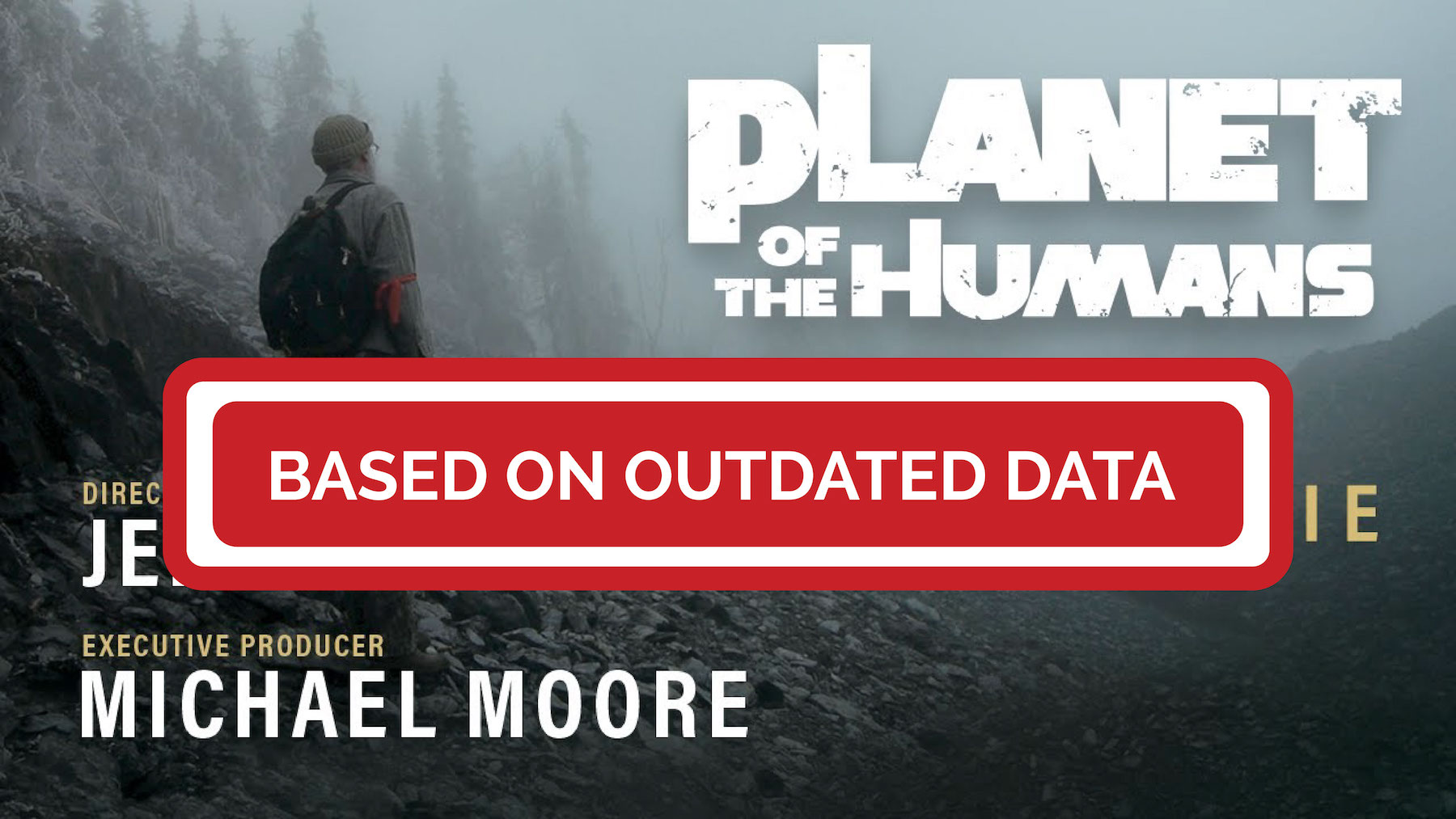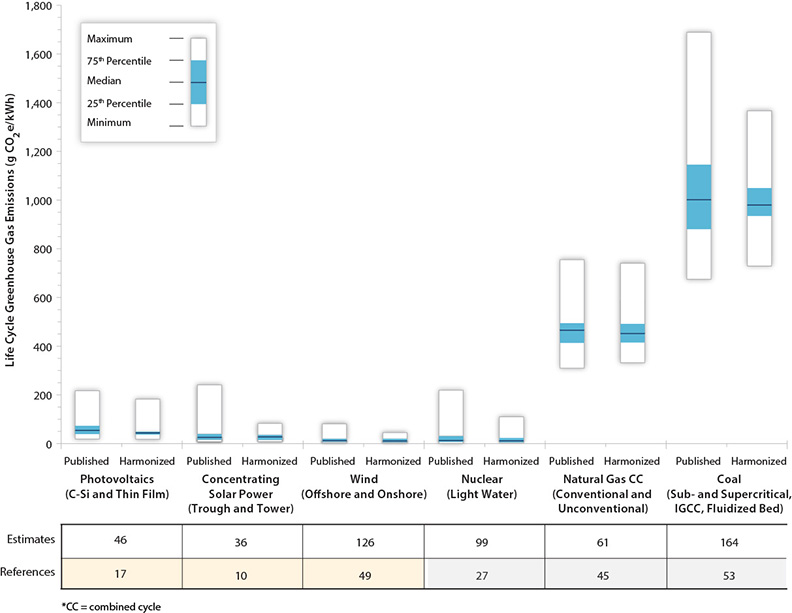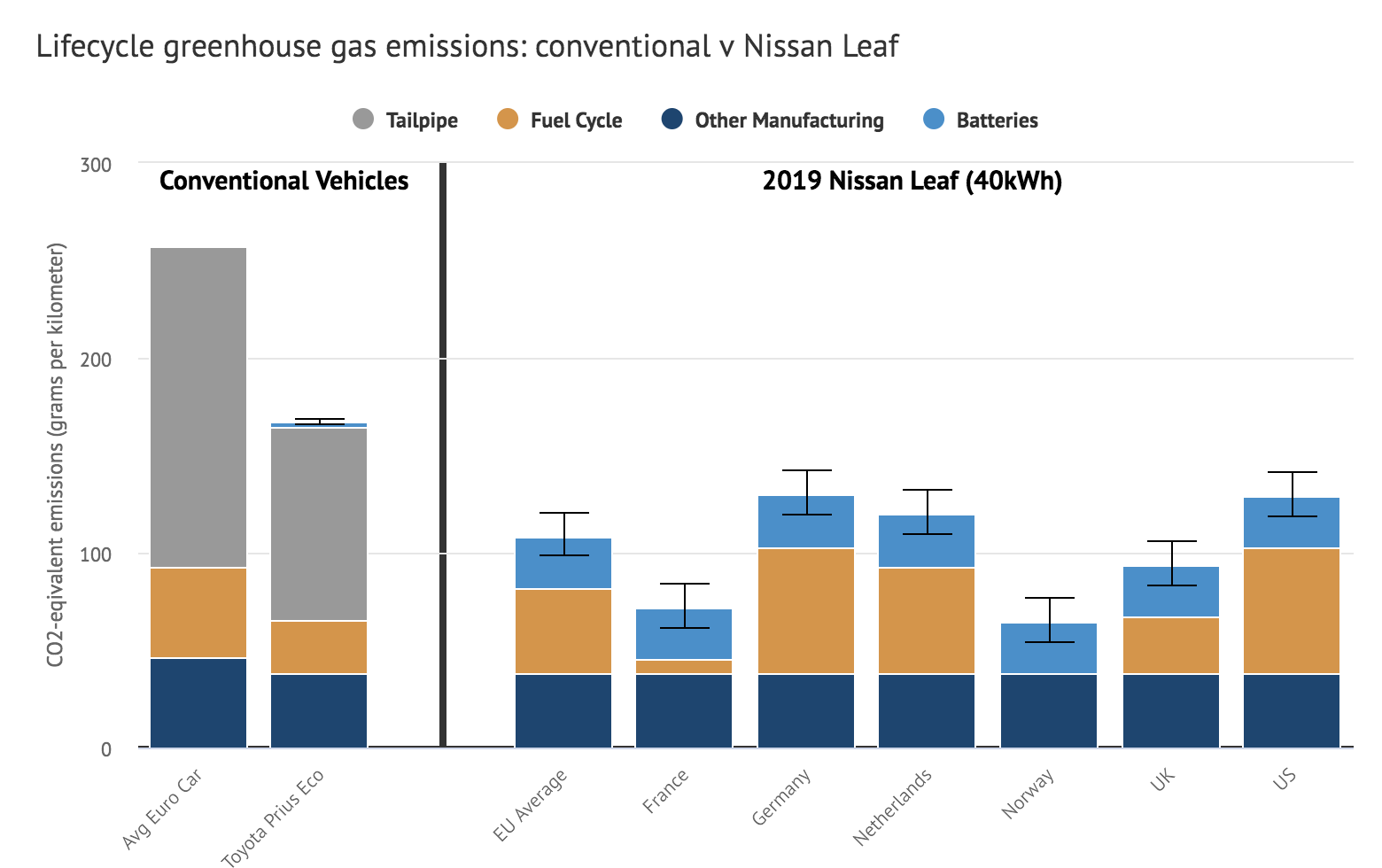
On 21 April 2020, Michael Moore released a documentary on his YouTube channel titled Planet of the Humans, which has received over 5 million views as of May 1st. The film, directed and narrated by Jeff Gibbs, criticizes renewable energy technologies like solar panels, wind turbines, biomass-burning plants, and electric vehicles, as well as leaders of certain environmental advocacy organizations that have supported those technologies. Many claims made in the film regarding renewable electricity generation are misleading and not supported by current scientific evidence.
The film’s central argument is that “green energy” technology is not an environmental solution because, after considering the resources required for manufacturing, it’s no better than burning fossil fuels. For example, while standing in front of a concentrated solar power plant, film producer Ozzie Zehner states, “You use more fossil fuels to do this than you’re getting benefit from it. You would have been better off just burning the fossil fuels in the first place, instead of playing pretend.”
Another speaker discussing wind turbines says, “The thing is that you’ve got to have a fossil fuel power plant backing it up and idling 100% of the time. Because if you cycle up or cycle down, as the demand on the wind comes through, then you actually generate a bigger carbon footprint than if you just ran it straight.”
The film touches on electric vehicles with footage and interviews from an early event in Lansing, Michigan for the launch of the plug-in hybrid Chevy Volt, which first sold in 2010. Gibbs asks about the source of electricity being used to charge the car and is eventually told that Lansing’s electricity was – when this segment was filmed in 2010 – “about 95% coal”. While no explicit conclusion is stated, it’s implied that this fact negates the emissions reduction benefit of an electric vehicle.
No analysis or context is provided to either demonstrate the scientific basis for these claims or explain their significance, making the film’s arguments extremely misleading. However, a method called Life Cycle Analysis can be used to evaluate emissions associated with generating electricity using solar panels or wind turbines, for example. Life Cycle Analysis studies quantify the environmental impact of the manufacturing chain from raw materials through to shipping. They also evaluate how long a power plant lasts and how it’s disposed of at the end of its useful lifetime. Comparing results for renewable energy technologies with fossil fuel power plants allows researchers to quantify the differences in environmental impact between the two sources.
One such comparison, published in 2013 by the US National Renewable Energy Laboratory, shows that solar and wind are associated with far less emissions than natural gas and coal. Wind, for example, was found to produce electricity with approximately 1% the emissions of coal, when accounting for manufacturing and decommissioning.
Figure—Total life cycle greenhouse gas emissions per kilowatt-hour of electricity produced. The “harmonized” columns represent an attempt to standardize the numbers pulled from different published studies for a consistent comparison. Source: NREL.
Another method for evaluating the claim that “you use more fossil fuels to do this than you’re getting benefit from it” is to calculate the amount of energy used to manufacture and construct a solar array or wind farm and compare that to the amount of electricity generated over its lifetime. This is known as Energy Return on Investment (EROI). As explained in a previous Climate Feedback claim review, it generally takes solar panels less than two years to generate the amount of energy that was used in their construction[1,2], while wind turbines do the same in less than one year[3].
The claim that fossil fuel plants compensating for variable generation from renewables emit more CO2 than they would running at full capacity instead of renewables is also inaccurate. A 2013 US National Renewable Energy Laboratory study evaluated the impact of wind and solar generation on fossil fuel plant emissions in the Western US. It found that the impact of cycling these plants up and down on CO2 emissions was “negligible”, limiting the benefit of wind and solar by less than 0.1%.
The growth of wind and solar energy generation is one reason that US greenhouse gas emissions have declined since 2005 (along with a transition from coal to natural gas plants and a reduction in the amount of electricity use).
As for electric vehicles, their associated lifecycle emissions do indeed depend partly on the source of electricity to the grid. Vehicles charged by a coal-dominated grid are linked to greater emissions than those charged by a low-carbon grid. However, even charging from coal-dominated electricity typically equates to lower emissions-per-mile (or per-kilometer) than an equivalent internal combustion engine vehicle.
Source: Carbon Brief.
There are few locations in the world today where electric vehicles are not currently cleaner than internal combustion vehicles. As of 2015, electric vehicles produced about 31% lower emissions-per-mile on average[4]. As grid emissions decrease, that number rises.
In Michigan, for example, where the film showed a Chevy Volt around 10 years ago, the share of coal on the grid has been decreasing. In 2010, coal provided almost 60% of electricity generation in the state, with no utility solar and less than 0.5% wind. But by 2018, coal’s share had decreased to about 37%, while solar and wind increased to about 5%. Natural gas generation, which emits less CO2 than coal, increased from 11% to about 27% over that same timespan.
As for Lansing’s grid, which the film presents as 95% coal, its coal plants are set to be retired—one by the end of the 2020, and the other by 2025.
Instead of presenting life cycle analyses for solar and wind generation or quantifying electric vehicle emissions that could inform viewers, Planet of the Humans misleads with broad claims that are not supported by scientific evidence. Unfortunately, these omissions and inaccuracies substantially shape the conclusions the film presents to its audience.
REFERENCES
- 1 – Lunardi et al (2018) Life cycle assessment on PERC solar modules. Solar Energy Materials and Solar Cells.
- 2 – Koppelaar (2017) Solar-PV energy payback and net energy: Meta-assessment of study quality, reproducibility, and results harmonization. Renewable and Sustainable Energy Reviews.
- 3 – Martínez et al (2009) Life cycle assessment of a multi-megawatt wind turbine. Renewable Energy.
- 4 – Knobloch et al (2020) Net emission reductions from electric cars and heat pumps in 59 world regions over time. Nature Sustainability.
This post was reviewed for accuracy by Dr Zeke Hausfather.


